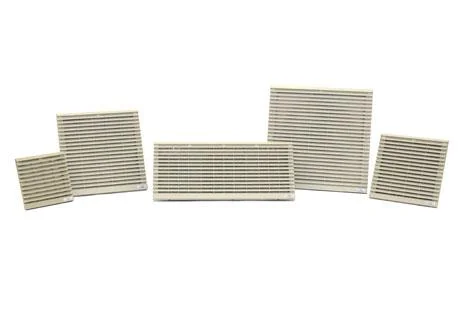Common Mistakes When Purchasing a Cabinet Cooling Fan

A cooling fan is the most economical choice for temperature regulation inside an electrical enclosure with moderate ambient temperatures and limited humidity. The costs of procuring an enclosure cooling fan and running one are an order of magnitude lower than those associated with air conditioners. However, the process of selecting the right type of cabinet cooling fan for your requirements can be tricky. If you have not had experience using cooling fans before, these are the common mistakes to avoid.
Miscalculating CFM Requirement
One of the crucial elements of selecting fans is identifying what the airflow rate or CFM should be. CFM stands for cubic feet per minute and is a measure of mass flow rate and consequently the cooling rate of the fan. The CFM of the fan is a function of the heat load that has to be dissipated from within the enclosure, the desired temperature differential and the specific heat capacity of air. While performing calculations, all heat sources in the enclosure need to be accounted for – heat from the equipment and solar heat gain. Even after calculating CFM necessary for the system, customers tend to pick the fans that just meet the requirement. System resistance needs to be factored in for a more accurate selection process of the cabinet cooling system.
Equipment Layout and System Resistance
From the inlet to the exhaust openings in the enclosure, the components inside the enclosure impede the velocity of air flow and are termed as elements of system resistance. These could be filters in the openings and configuration of electrical equipment. To minimize system resistance, keep the inlet and exhaust channels free for air flow and maintain a vertical flow through the system to allow for improved cooling efficiency. A general rule of thumb is to assume that each filter in the air flow path reduces the CFM by 33%. Considering system resistance could be the thin line between efficient cooling and dangerous hot spots in the enclosure.
Temperature Considerations
Cooling fans reduce the temperature inside the enclosure by forced convection. Since they do not have an active closed temperature regulation loop, they are best suited for locations where extreme external temperatures are not anticipated. If the electrical equipment can operate at temperatures slightly higher than the ambient temperature, then a cooling fan may be a viable option for cooling the enclosure. However, opting for a fan just to save on power may prove to be an expensive compromise when temperatures rise above equipment operating levels.
Environmental Factors
Typically, enclosures with cooling fans are configured with air inlet and exhaust cutouts. Filters are located at both openings to reduce particle entry from the outlet as well as the inlet. It is essential to understand the environmental conditions the enclosure is subjected to. A filtered fan may take care of the cooling capacity requirements of the enclosure but may not protect the equipment inside from airborne particles. If airborne particles and oil enter the enclosure, they can prove to be detrimental to electrical equipment.
Trying to Save on Necessary Accessories
Cooling fans are certainly options that help you save money while providing the essential temperature control for electrical equipment. However, skimping on purchase of accessories is a mistake that many customers are known to make. Accessories you may need include:
-
Vent shroud kits to shield the inlet and outlet from rain and snow.
-
Thermostats to ensure your cabinet cooling fan is working only when necessary, not in cool, damp weather, to prolong equipment life.
-
Washable replacement filters for very dusty environments where disposable foam or paper filters get clogged quickly.
-
Vent Kits to distribute air so there’s always an adequate flow over heat-generating equipment.
Without these necessary accessories, potential exposure to precipitation, contamination, or other elements is increased, also increasing potential maintenance costs.
For more information about system configuration, placement of equipment and reducing hot spots while using a cabinet cooling fan, contact our expert sales team at Thermal Edge Inc.

